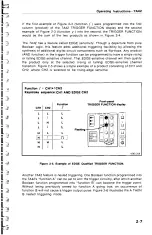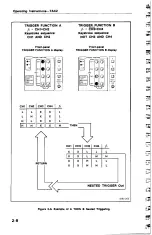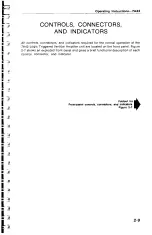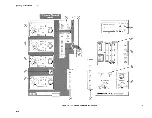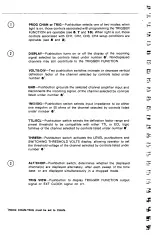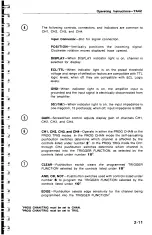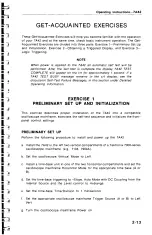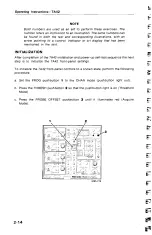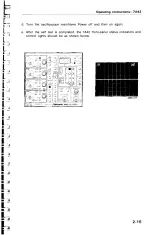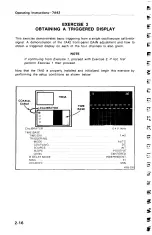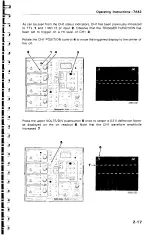
Operating
Instructions
—7A42
BOOLEAN
ALGEBRA FOR
7A42 USE
The
basis
of
digital electronics
is
the
binary
number
system;
ones
and
zeroes,
highs
and
lows.
The
most
common
digital
circuit
components,
inverters
and
gates,
operate
on
the
principles
of
Boolean
algebra.
Boolean
algebra
is
a
binary
algebra
with
many characteristics
similar
or
analogous
to
the ordinary
algebra
we
use.
Expressions
in
both
algebras
consist
of
variables,
constants,
and
operators.
The
7A42
provides
oscilloscope
triggering
on
Boolean or
logical
combinations
of
the
input
signals.
The
input
channels
are
the
variables
in
the Boolean trigger
equation,
and
the
7A42
supplies
the
operators
as
programmed
by
the
user.
The
following
is
a
brief
review
of
the basics
of
Boolean
algebra
and
an
introduction
to
how
they
apply
to
the
7A42.
Definition
of
Boolean
logic
functions:
1.
The
dot
(•)
is
used
to
indicate
the
AND logical
operator.
The
AND
function
of
two
or more
variables
is sometimes
referred
to
as
a
product.
It
is
the
Boolean
equivalent
of
ordinary
multiplication.
In
some
Boolean
expressions
the
dot
may
be
omitted,
i.e.,
A
•
B=AB.
2.
The
plus
sign
(+),
indicates
the
OR
logical
operator,
which
is sometimes
referred
to
as
a sum
(the
Boolean
equivalent
of
addition).
The
AND
function
has
mathematical
hierarchy
over
the
OR
function
as
multiplication
has
over
addition, thus
the
expression
W
•
X+Y
•Z
would
be
evaluated
as
if
it
were
written
(W
•
X)+(Y
•
Z).
3.
A
bar
over
a constant
or
variable
is used
to
indicate
the
NOT
logical
operator.
Other
words that
are
sometimes
used
to
describe
this
operation
are
invert
or
complement; X
is
the
inverse
or
complement
of
X.
4.
A
common
Boolean
function
comprised
of
AND,
OR, and
invert
operators
is
the
EXCLUSIVE-OR
function,
symbolized
by
a
plus
sign
with
a
circle around
it
(
+).
The
EXCLUSIVE-OR
of
variables
X
and
Y
is
X•/
Y+/X
•
Y.
The
AND,
OR,
NOT,
and
XOR
(EXCLUSIVE-OR)
logic
functions
are
defined
in
Figure
2-1
for
the
constants
0
(false)
and
1
(true).
Figure 2-2
Definition of the
Boolean AND,
OR, NOT and XOR (EXCLUSIVE-OR) logic
functions.
2-3



















